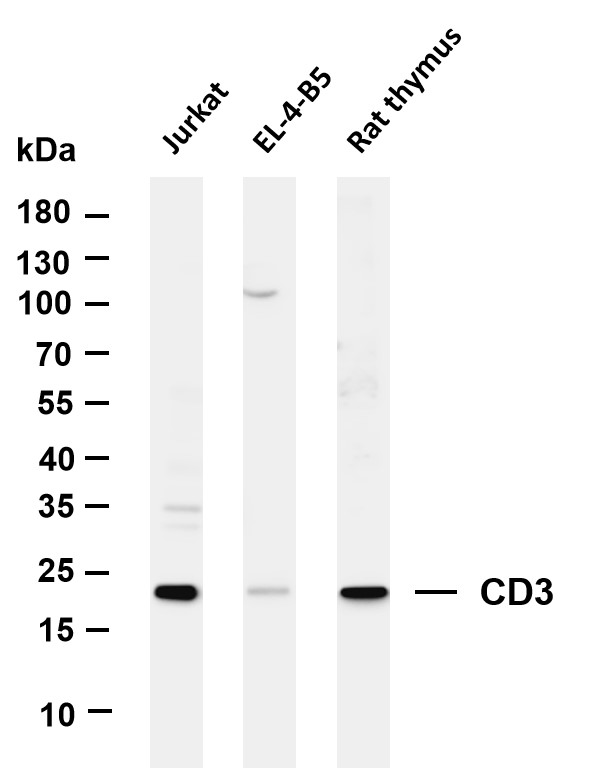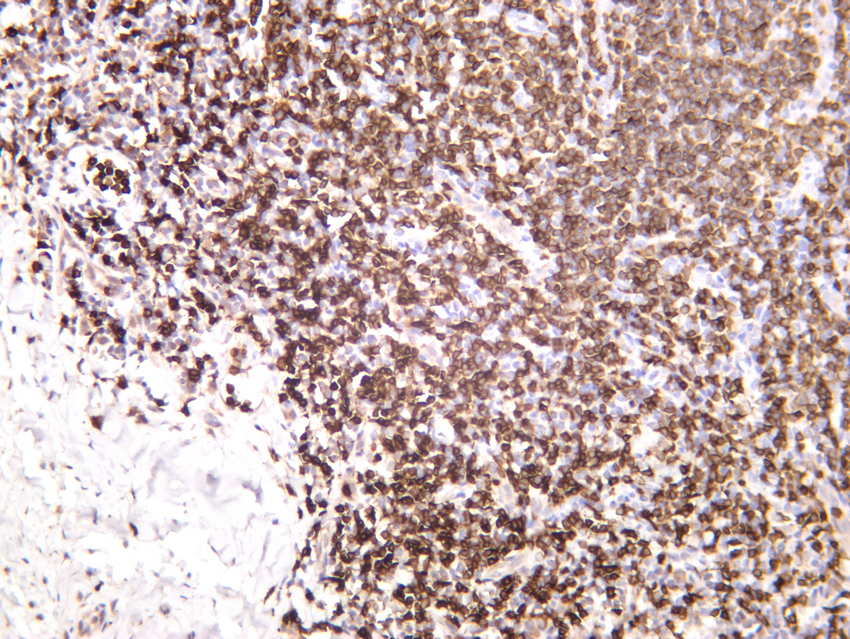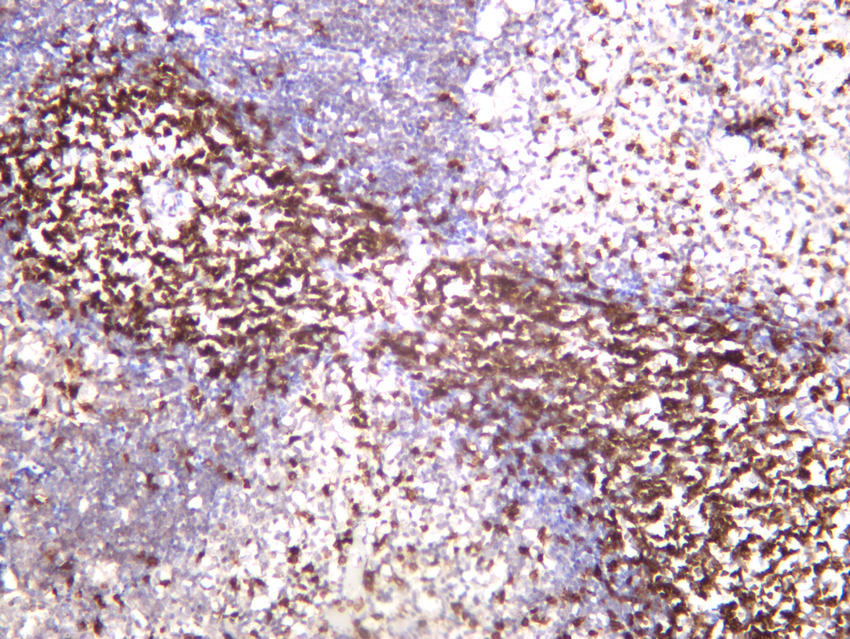CD3 (PT0212R) PT® Rabbit mAb
- Catalog No.:YM8134
- Applications:WB;IHC;IF;IP;ELISA
- Reactivity:Human;Mouse;Rat;
- Target:
- CD3E
- Fields:
- >>Hematopoietic cell lineage;>>Th1 and Th2 cell differentiation;>>Th17 cell differentiation;>>T cell receptor signaling pathway;>>Chagas disease;>>Measles;>>Human T-cell leukemia virus 1 infection;>>Epstein-Barr virus infection;>>Human immunodeficiency virus 1 infection;>>PD-L1 expression and PD-1 checkpoint pathway in cancer;>>Primary immunodeficiency
- Gene Name:
- CD3E T3E
- Protein Name:
- CD3, CD3E
- Human Gene Id:
- 916
- Human Swiss Prot No:
- P07766
- Specificity:
- endogenous
- Formulation:
- PBS, 50% glycerol, 0.05% Proclin 300, 0.05%BSA
- Source:
- Monoclonal, rabbit, IgG, Kappa
- Dilution:
- IHC 1:200-1:1000,WB 1:1000-1:5000,IF 1:200-1:1000,ELISA 1:5000-1:20000,IP 1:50-1:200,
- Purification:
- Protein A
- Storage Stability:
- -15°C to -25°C/1 year(Do not lower than -25°C)
- Other Name:
- T-cell surface glycoprotein CD3 epsilon chain (T-cell surface antigen T3/Leu-4 epsilon chain;CD antigen CD3e)
- Molecular Weight(Da):
- 23kD
- Observed Band(KD):
- 23kD
- Background:
- The protein encoded by this gene is the CD3-epsilon polypeptide, which together with CD3-gamma, -delta and -zeta, and the T-cell receptor alpha/beta and gamma/delta heterodimers, forms the T-cell receptor-CD3 complex. This complex plays an important role in coupling antigen recognition to several intracellular signal-transduction pathways. The genes encoding the epsilon, gamma and delta polypeptides are located in the same cluster on chromosome 11. The epsilon polypeptide plays an essential role in T-cell development. Defects in this gene cause immunodeficiency. This gene has also been linked to a susceptibility to type I diabetes in women. [provided by RefSeq, Jul 2008],
- Function:
- function:The CD3 complex mediates signal transduction.,online information:CD3E mutation db,similarity:Contains 1 Ig-like (immunoglobulin-like) domain.,similarity:Contains 1 ITAM domain.,subunit:The TCR/CD3 complex of T-lymphocytes consists of either a TCR alpha/beta or TCR gamma/delta heterodimer coexpressed at the cell surface with the invariant subunits of CD3 labeled gamma, delta, epsilon, zeta, and eta.,
- Subcellular Location:
- Membranous
- Expression:
- Membranous
Longitudinal analyses reveal distinct immune response landscapes in lung and intestinal tissues from SARS-CoV-2-infected rhesus macaques IF Monkey 1:100 lung ,small intestine tissue/
- June 19-2018
- WESTERN IMMUNOBLOTTING PROTOCOL
- June 19-2018
- IMMUNOHISTOCHEMISTRY-PARAFFIN PROTOCOL
- June 19-2018
- IMMUNOFLUORESCENCE PROTOCOL
- September 08-2020
- FLOW-CYTOMEYRT-PROTOCOL
- May 20-2022
- Cell-Based ELISA│解您多样本WB检测之困扰
- July 13-2018
- CELL-BASED-ELISA-PROTOCOL-FOR-ACETYL-PROTEIN
- July 13-2018
- CELL-BASED-ELISA-PROTOCOL-FOR-PHOSPHO-PROTEIN
- July 13-2018
- Antibody-FAQs
- Products Images

- Various whole cell lysates were separated by 4-20% SDS-PAGE, and the membrane was blotted with anti-CD3 (PT0212R) antibody. The HRP-conjugated Goat anti-Rabbit IgG(H + L) antibody was used to detect the antibody. Lane 1:Jurkat Lane 2: EL-4-B5 Lane 3: Rat thymus Predicted band size: 23kDa Observed band size: 23kDa

- Rat spleen was stained with anti-CD3 (PT0212R) rabbit antibody

- Human tonsil was stained with anti-CD3 (PT0212R) rabbit antibody

- Mouse spleen was stained with anti-CD3 (PT0212R) rabbit antibody



